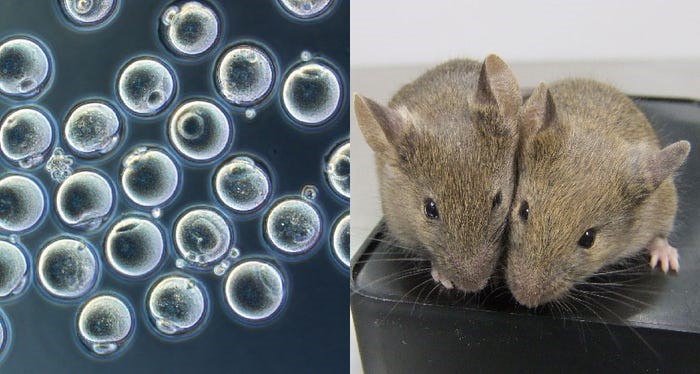Free Courses Sale ends Soon, Get It Now


Free Courses Sale ends Soon, Get It Now



Disclaimer: Copyright infringement not intended.
Context
Details of the study
|
READ: STEM CELLS: https://www.iasgyan.in/daily-current-affairs/stem-cells-11 Induced pluripotent stem cells Induced pluripotent stem cells (also known as iPS cells or iPSCs) are a type of pluripotent stem cell that can be generated directly from a somatic cell. |
Note: According to the scientists, the baby mice had a normal lifespan and they went on to have their own babies as adults. But only seven out of 630 implanted embryos produced living pups. Although they get quite a lot of eggs, these eggs are clearly not fully competent because they really get a very, very small proportion of them that are capable of being fertilised and forming embryos.
Can the technique be used in humans?
Ethical questions raised;
What happens to all the embryos created but not used? Does it violate ethical norms of respect to create so many potential human lives knowing that the vast majority will be destroyed or indefinitely stored?”
Final Thoughts
Genome Concepts: https://www.iasgyan.in/blogs/genomic-and-genetic-concepts
|
PRACTICE QUESTION Q. Which of the following statements are correct with respect to Genetics? a. Epistasis is a circumstance where the expression of one gene is modified (e.g., masked, inhibited or suppressed) by the expression of one or more other genes. b. A founder effect, refers to the reduction in genomic variability that occurs when a small group of individuals becomes separated from a larger population. c. Induced pluripotent stem cells are a type of pluripotent stem cell that can be generated directly from a somatic cell. d. Eugenics is a discredited belief that selective breeding for certain inherited human traits can improve the “fitness” of future generations. 1) a and b 2) b and c 3) a, b and d 4) All of the above statements are correct. Correct Answer: Option 4 |
© 2024 iasgyan. All right reserved